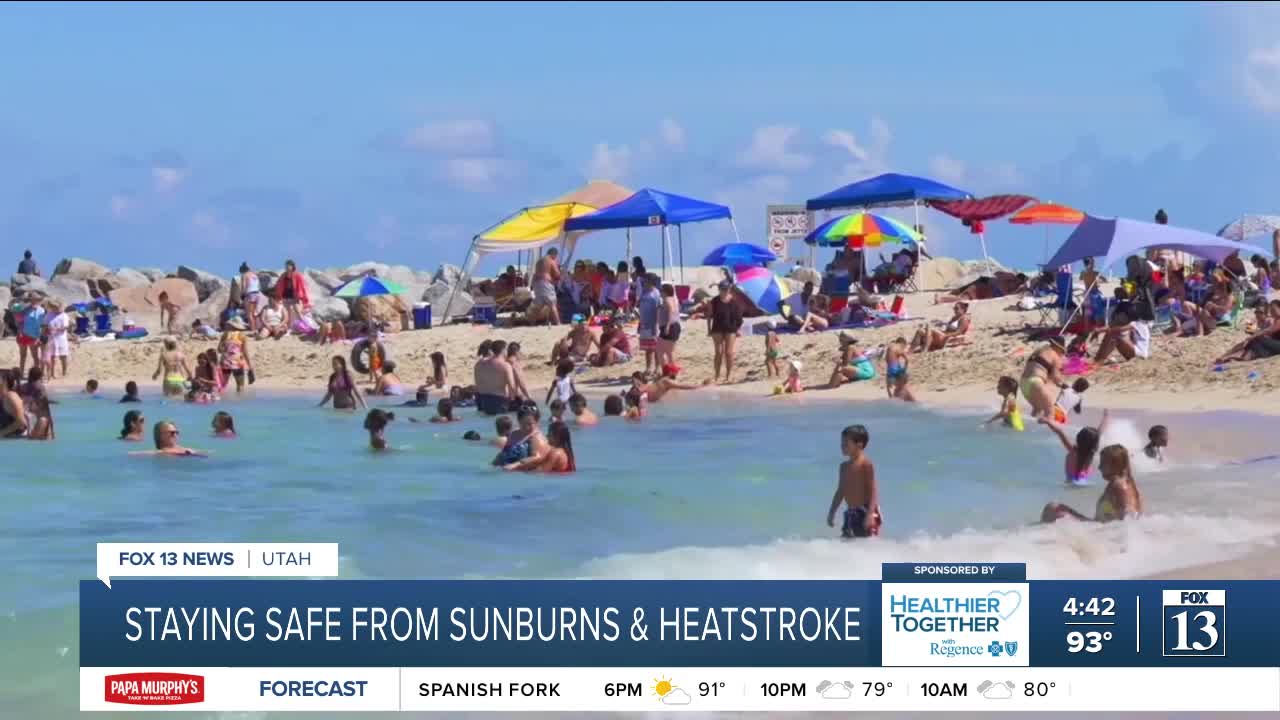It’s the hottest time of the year in Utah, and with July and August bringing long, sun-drenched days, many families are heading outside to soak it all in. But as temperatures climb, so do the risks.
This summer is expected to be even hotter than usual, which makes it especially important to understand how to stay safe in the sun and heat, says Dr. Mike Woodruff with Regence BlueCross BlueShield of Utah.
“It’s really important to know how to stay safe and healthy in the sun and the heat,” Woodruff said.
That starts with preventing sunburns—something far more serious than just a temporary discomfort. Sunburns result from ultraviolet radiation, or UV rays. There are two types to be aware of: UVA and UVB.
“UVA goes deeper into the skin and breaks up collagen, causing premature aging and wrinkles—and nobody wants that,” Woodruff said. “UVB stays on the surface and causes the typical sunburn, but it also damages your DNA.”
That DNA damage can increase the risk of developing skin cancer. Utah, in fact, has the highest rate of melanoma—the deadliest form of skin cancer—in the country. Woodruff said several factors contribute to the risk, including the state’s high elevation, a high number of sunny days each year, and a population that tends to have lighter skin tones.
“Fortunately, it’s not that common,” he said, “but in Utah we’re at an increased risk for developing skin cancer.”
To protect yourself, experts recommend using sunscreen consistently—and choosing the right kind. Look for broad-spectrum sunscreen that guards against both UVA and UVB rays. SPF, or sun protection factor, is another key label to watch for.
“We recommend an SPF between 30 and 60,” Woodruff said. “Under 30 is not as effective, and over 60 doesn’t offer much more protection. Also, make sure it’s water resistant.”
There are two main types of sunscreen: mineral and chemical. Mineral sunscreens use physical blockers such as titanium dioxide or zinc oxide to reflect UV rays. Chemical sunscreens, by contrast, are absorbed into the skin and neutralize radiation before it causes damage.
Sunscreen isn’t the only line of defense. Wearing UV-protective clothing—like swim shirts and wide-brimmed hats—can offer an extra layer of protection, especially during peak sun hours.
But sunburn isn’t the only summer health concern. Heat-related illnesses are also on the rise during extreme temperatures. Woodruff said it starts when the body becomes too hot to regulate itself effectively.
“You can actually get into a cycle where it causes headaches, nausea, vomiting, dizziness—even seizures or confusion,” he said.
When someone shows signs of heat-related illness, the first step is to get them out of the heat and begin rehydrating. But when confusion or altered mental status sets in, it may be something much more serious.
“The most serious form is when people are confused or who have altered mental status—that’s called heatstroke, and that’s a true medical emergency,” Woodruff said.
And it doesn’t have to be triple-digit temperatures for it to be dangerous. Once the temperature reaches 80 degrees or higher, the risk begins to rise.
“Stay hydrated, stay cool, try to reduce your exposure to UV rays, and remember that the air quality can be somewhat bad when it’s hot outside,” he added.
Before heading outdoors, health experts recommend checking both the UV index and air quality forecast. A few simple precautions can make all the difference in keeping your family healthy, happy and safe this summer.



